OPERA, PAPER, SCISSORS: 'Barber' from the page to the stage
/
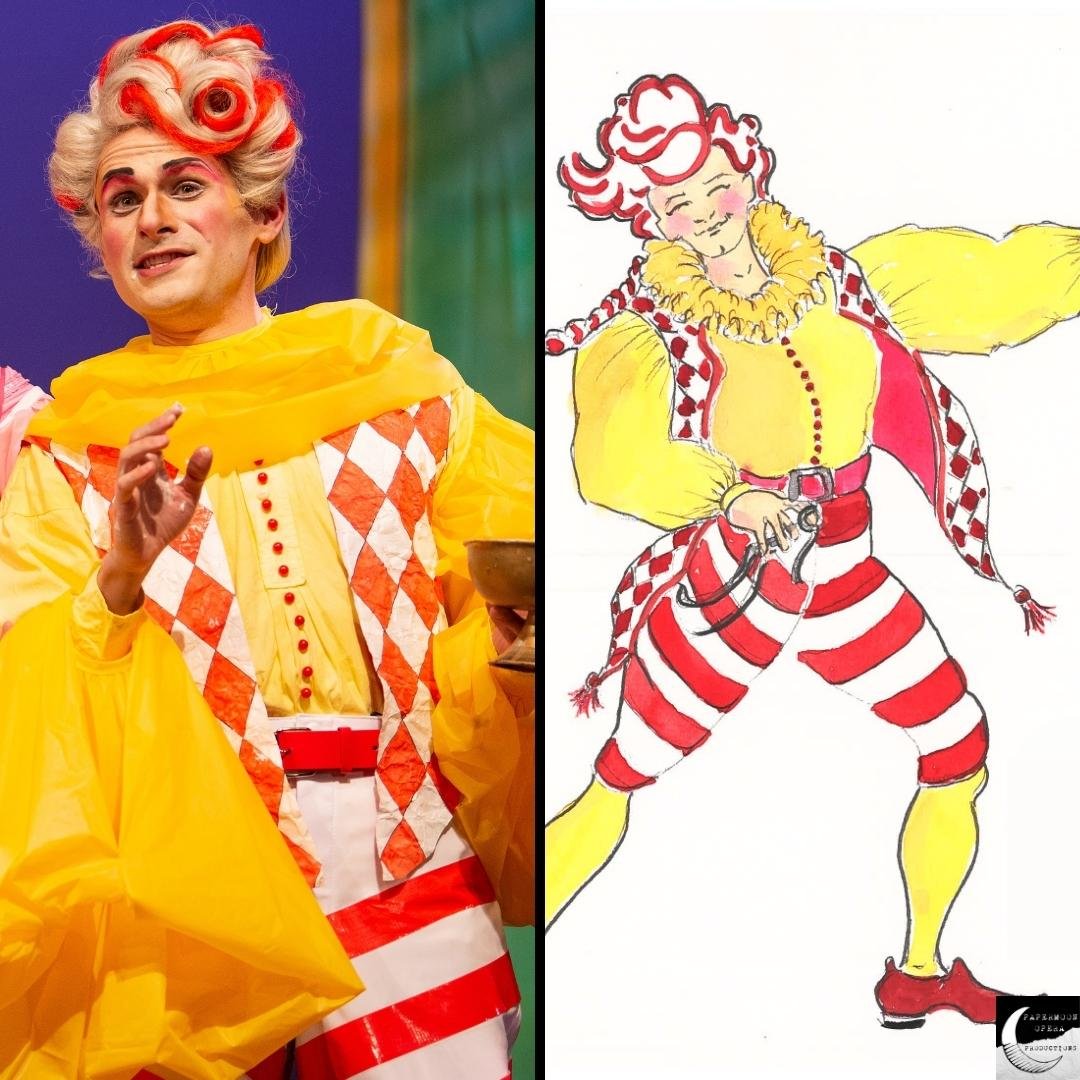
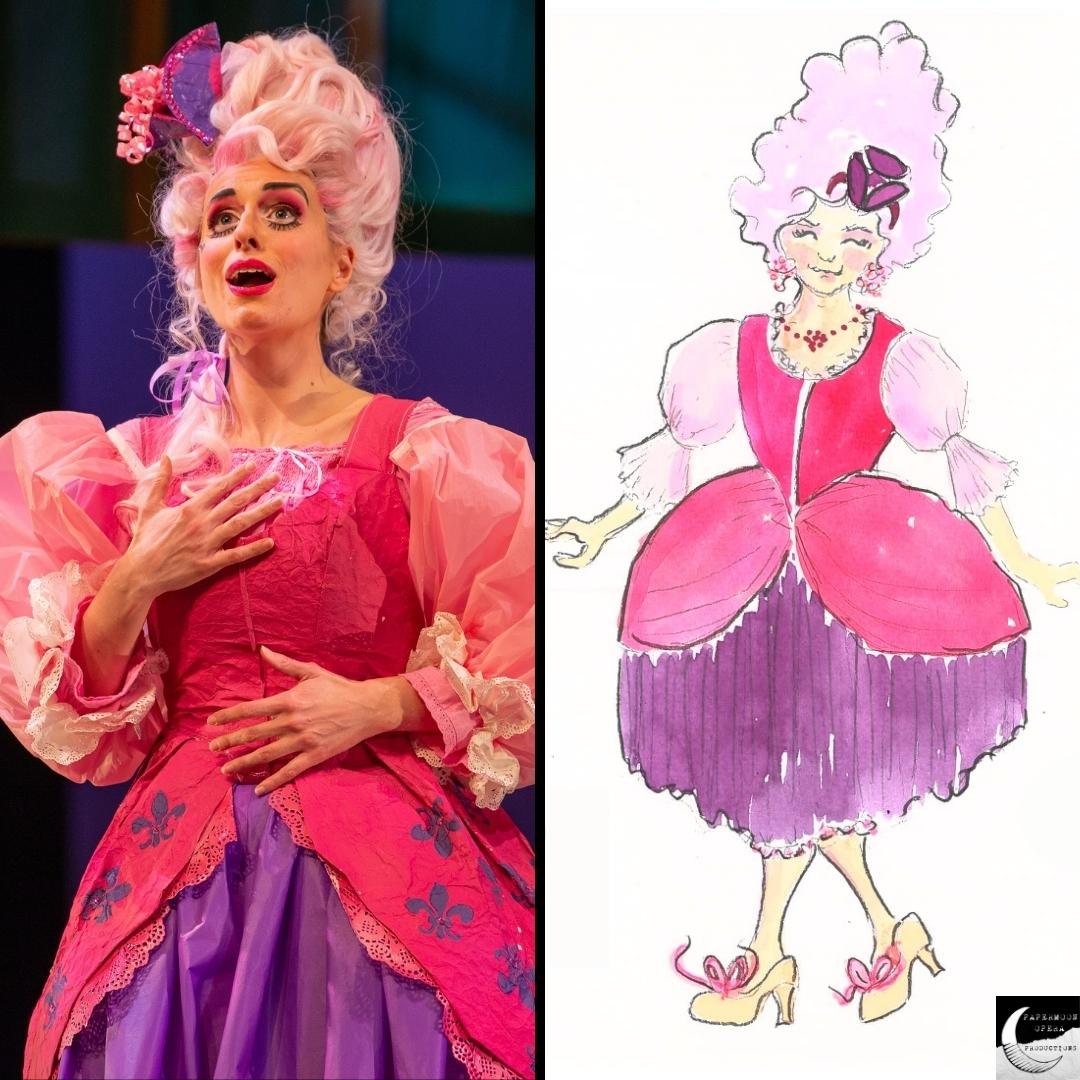

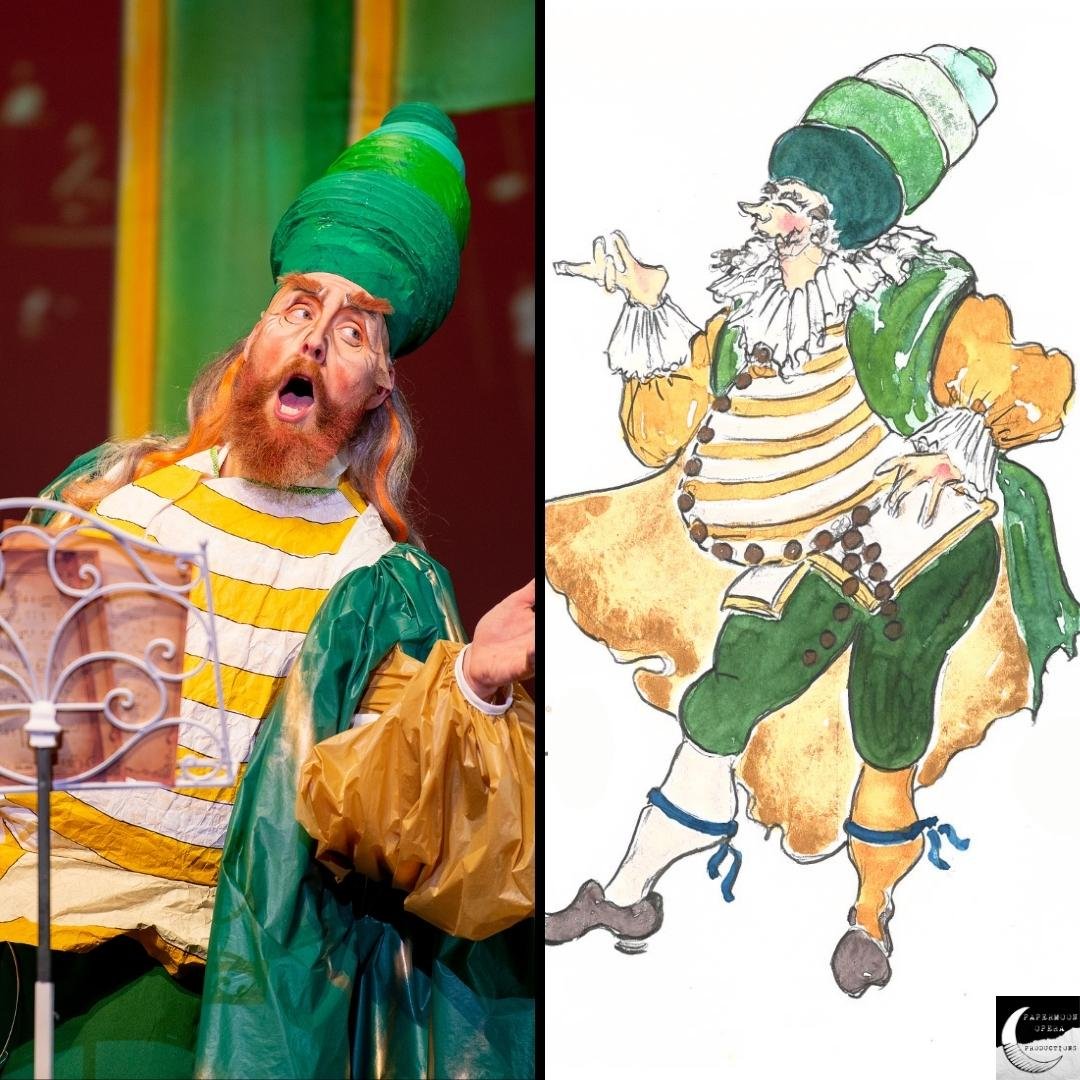
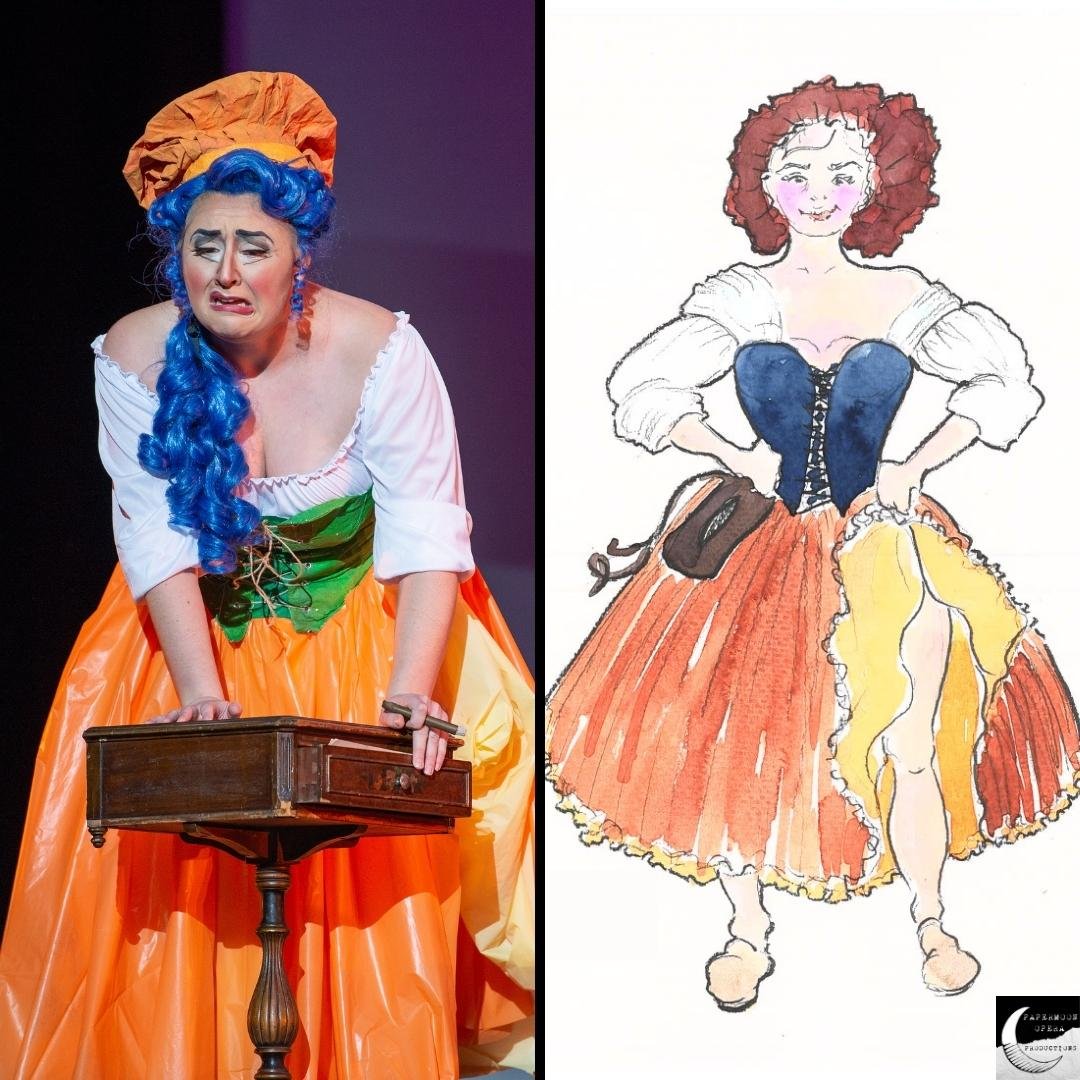
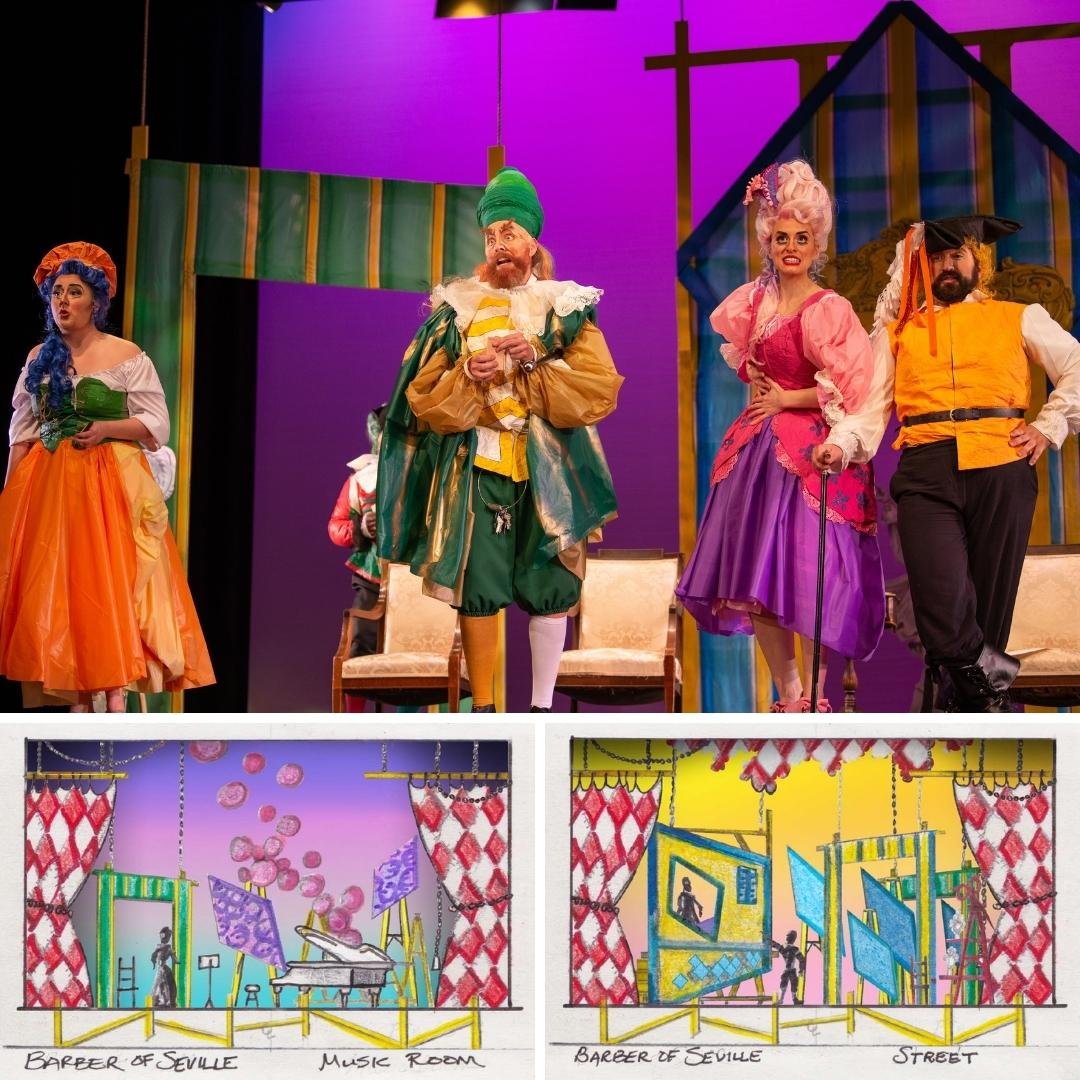
We’re over the moon to collaborate with Papermoon Opera Productions for our new production of THE BARBER OF SEVILLE.
We chatted with members of the Papermoon team to learn more about how they created glorious costumes and sets almost entirely out of paper and paired them with state-of-the-art projections and lighting. The result? A visual feast that’s as bold as Rossini’s brilliant score.
THE BARBER OF SEVILLE - Feb 25 & 27 at The Grand; Tickets & info
Interview by Julia Cooke, artistic and general director of Baltimore Concert Opera
How did Papermoon Opera Productions start and why did you choose paper as your medium?
Fenlon Moon, Papermoon artistic director and co-creator: Jefferson Ridenour (Papermoon co-creator and scenic designer) and I started working with paper around 2015… because we were told that we had no money to make productions happen. We did a very intimate production of La bohème. He did charcoal drawings of the Paris skyline, a loft, and stove, and the painting that Marcello was working on, and we had this wonderful idea to continue to work [in paper] together.
It’s an interesting medium, especially for something as joyful as The Barber of Seville. It gives us this childlike ability to play. I think the team at Papermoon has really embraced that, and it’s turned into something that is even more creative than working with wood and normal sets.
Tell us more about your design process.
Fenlon: What happens most times is Jeff and I sit down and talk about 2 or 3 elements that we really want to punch up. For Barber, we’re calling it “nouveau commedia” because it’s commedia dell'arte with sort of an 80’s spin to it. The lights, projections, and costumes all come together. We have more flexibility working with these materials – you can inject these flat surfaces with so much texture and fun, and we get this playful, joyful production like it was just drawn today for the audience. That’s very much how commedia started.
Kathleen Doyle, Papermoon costume designer: Working with paper is faster and it’s more direct. It’s kind of immediately satisfying because you see the craft person's or artist’s hand print on the costume immediately. In a funny way there’s less of a textural jump from the paper sketch to the paper costume… For example, instead of doing a hand cross-stitched hem on 8 yards of a brocade silk, we can use a pair of pinking shears and cut the skirt where it should be hemmed. Take Figaro’s vest – this is tyvek. It doesn’t fray and it is just as strong here [touching the hem] as if we hemmed it.
Fenlon: The underpinnings are cloth. His shirt is definitely cloth, but everything that goes on top is paper. It just has this incredible texture to it, like the tyvek paper that you’re familiar with from USPS mailer bags.
Kathleen: In fact, we are using some of those express and priority mail envelopes! We literally take off the adhesive part and sew them together for yardage.
Fascinating! How do you sew paper?
Kathleen: [Laughs] I’ve had good luck with using a long, wide stitch and universal needles, although I break needles pretty often because they become dull.
Fenlon, tell us more about your relationship with this opera. You know it well having done this role yourself years ago.
Fenlon: Yes, I got to sing Rosina several times. I did that role with Chuck Hudson directing. He had studied movement and mime with Marcel Marceau so it was a very physical comedy. I guess the biggest thrill for me was people actually laughing out loud, guffawing in the theater. That made me so happy.
sET & PROP PHOTOS COURTESY OF Jefferson Ridenour, PAPERMOON OPERA PRODUCTIONS
I think that joy and laughter are just so important right now. Jeff and I designed this in the middle of the pandemic. We were also designing [Poulenc’s] La voix humaine, which is about a woman who kills herself, so we really needed this joyful, brilliant, vibrant thing to happen. We really had so much fun working together on it.
You keep saying “joyful” and this production really is! Can you tell us a little bit about the set?
Jefferson Ridenour, Papermoon co-creator and scenic designer: It’s actually really fascinating. For this production we explored some new materials that we haven’t used before. For example, the facades of the arch units and the false proscenium that you see are created with a fabric that’s made of 50% recycled plastics. That’s something that we haven’t tried before and it ended up being really cool.
The way we’ve explored these mediums… It's almost like going back to being a kindergartner and playing with arts and crafts and paper and scissors. It’s using all of those things that we loved about being a kid and bringing them to an elevated level for the stage.
That’s so fascinating, especially in terms of the environmental impact. Instead of throwing away a giant set, many pieces can be recycled and repurposed. It’s also probably easier to transport.
Fenlon: I love to tell the story about how I fit the entire Carmen set that we did together in a Honda Fit. If that isn’t environmentally sound then I don’t know what is!
Finally, is there anything else you want to share about ‘Barber’?
Jefferson: I think what we’ve explored with this is really finding the joy in color and patterns – getting back to that childlike love and passion and bringing it to the stage… The music is so bubbly, and we just wanted to bring joy with this design, especially because of the last couple of years. When we started to design this during COVID, I needed color. I needed boldness. I needed joy, and that’s what this brought.
That is exactly why we selected this piece. We could all use a laugh and some boisterous excitement, and we can see it in your design. Thank you so much!
The Barber of Seville is a co-production with Baltimore Concert Opera, in collaboration with Papermoon Opera Productions.

